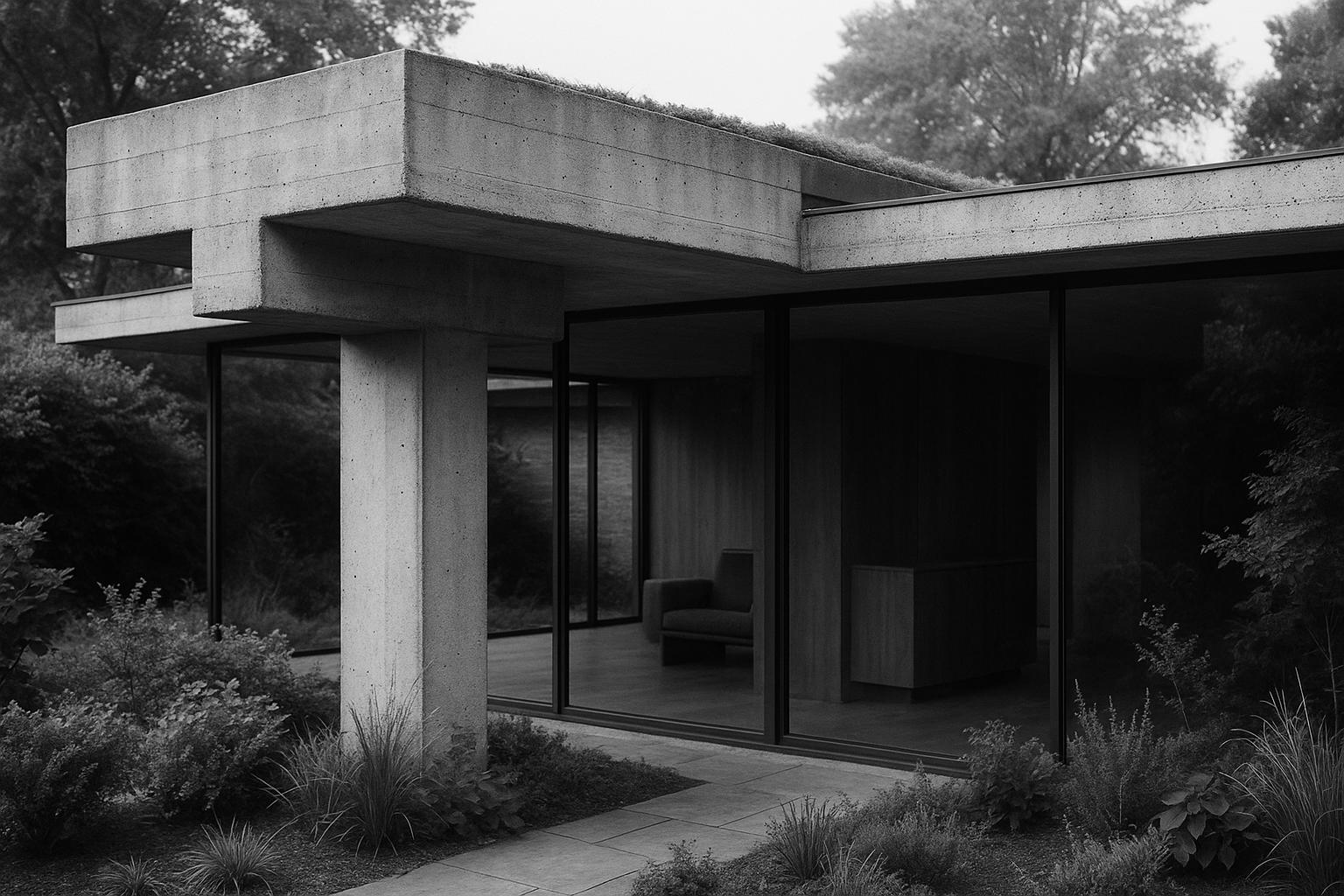DF_DC’s latest intervention in Primrose Hill is a study in compression and poise: a compact, concrete‑framed extension that projects just 1.4 metres from the rear of a semi‑detached home, cantilevering above full‑height glazing and capped by a planted flat roof. Named T‑House for the chunky T‑shaped profile of its exposed frame, the addition expands the living and dining spaces while keeping the existing patio and garden firmly at the fore. According to the original report, photography of the completed work was made by Lorenzo Zandri.
The studio says the brief prioritised the garden, requiring “the scale of the extension to be judiciously established to retain as much of the garden as possible,” and that the new volume should “possess a landscape quality.” In response, DF_DC limited the projection so the new element reads as a threshold between house and garden, opening an oblique southern aspect and improving internal flow without claiming large amounts of external space. This restrained approach is echoed in contemporaneous press coverage, which describes the addition as modest but atmospheric.
T‑House’s concrete frame is both tectonic and organisational. The exposed reinforced concrete cantilever sits above a diaphanous glass box, framing views out to the garden; at the same time the structure extends into the interior to become a central spine that supports joinery, seating and generous storage. Sliding partitions allow the snug to be closed off from the kitchen and dining area, giving the compact plan a degree of adaptability that belies its shallow footprint.
Materials and detailing emphasise tactile contrast. Walnut ceilings — chosen to relate back to an existing dining table — mediate between the heavy concrete and the glazed enclosure, while deep green fabrics clad a low bench and a dining‑side wall. A dark, textured veneer lines the central dividing wall; the studio notes that “walls and partition elements have a textile, tactile quality due to their use of fabrics, textured veneers and metal coatings.” The concrete itself is left deliberately raw where it forms the structural frame that anchors the sequence of spaces.
The planted roof is an important part of the proposition. Designed to be read both from the garden and from the bedrooms above, the green roof helps visually compensate for the modest loss of external footprint during summer months and reinforces the extension’s connection to the landscape it preserves. One architecture magazine described the roof as a vivid counterpoint to the solid frame, conceived to make the garden feel continuous despite the new built edge.
T‑House sits squarely within DF_DC’s material‑driven trajectory. The practice, founded in 2016 by Dario Franchini and Diego Calderon with studios in London and Switzerland, has repeatedly explored how concrete can be used as a durable, expressive structuring device. Previous work includes a reticular, long‑span apartment block above the railway at Via Carona that emphasises a robust structural exoskeleton and proposes longevity by separating enduring structure from replaceable finishes, and the monolithic Pyramid House in Tegna, which investigated carved thresholds and introverted massing. The firm’s portfolio and office profile point to a consistent interest in how heavy‑weight materials can be moderated by careful apertures and interior warmth.
Seen together, these projects show a recurring set of concerns — structure as armature, measured openings, and timber or textile insertions to soften concrete’s mass. In the Primrose Hill house those concerns are reinterpreted at a domestic scale: heavy, tectonic geometry is made intimate through walnut joinery, upholstered benches and sliding partitions that offer varying degrees of openness. DF_DC’s account frames the extension as an autonomous piece that organises domestic life around a single, robust instrument — the T‑shaped frame.
There are small discrepancies in how the depth of the projection has been reported: while DF_DC and a number of outlets state the extension projects 1.4 metres, one European design magazine described it as “just over one metre.” Such differences do not alter the design’s intent but are worth noting when precise measurements matter to readers assessing the relationship between built form and retained garden.
Ultimately T‑House reads as a careful exercise in trade‑offs: a physically modest addition that amplifies internal amenity, preserves external amenity and reasserts material authorship. The project is presented as both a discrete, tectonic object and a porous threshold — a small but resonant example of how contemporary concrete work can be softened and humanised without losing its structural clarity.
📌 Reference Map:
##Reference Map:
- Paragraph 1 – [1], [2]
- Paragraph 2 – [1], [3], [4]
- Paragraph 3 – [1], [2], [3]
- Paragraph 4 – [1], [2], [3]
- Paragraph 5 – [1], [4]
- Paragraph 6 – [1], [5], [6], [7]
- Paragraph 7 – [5], [6], [7]
- Paragraph 8 – [1], [4], [3]
- Paragraph 9 – [1], [2], [4]
Source: Noah Wire Services
